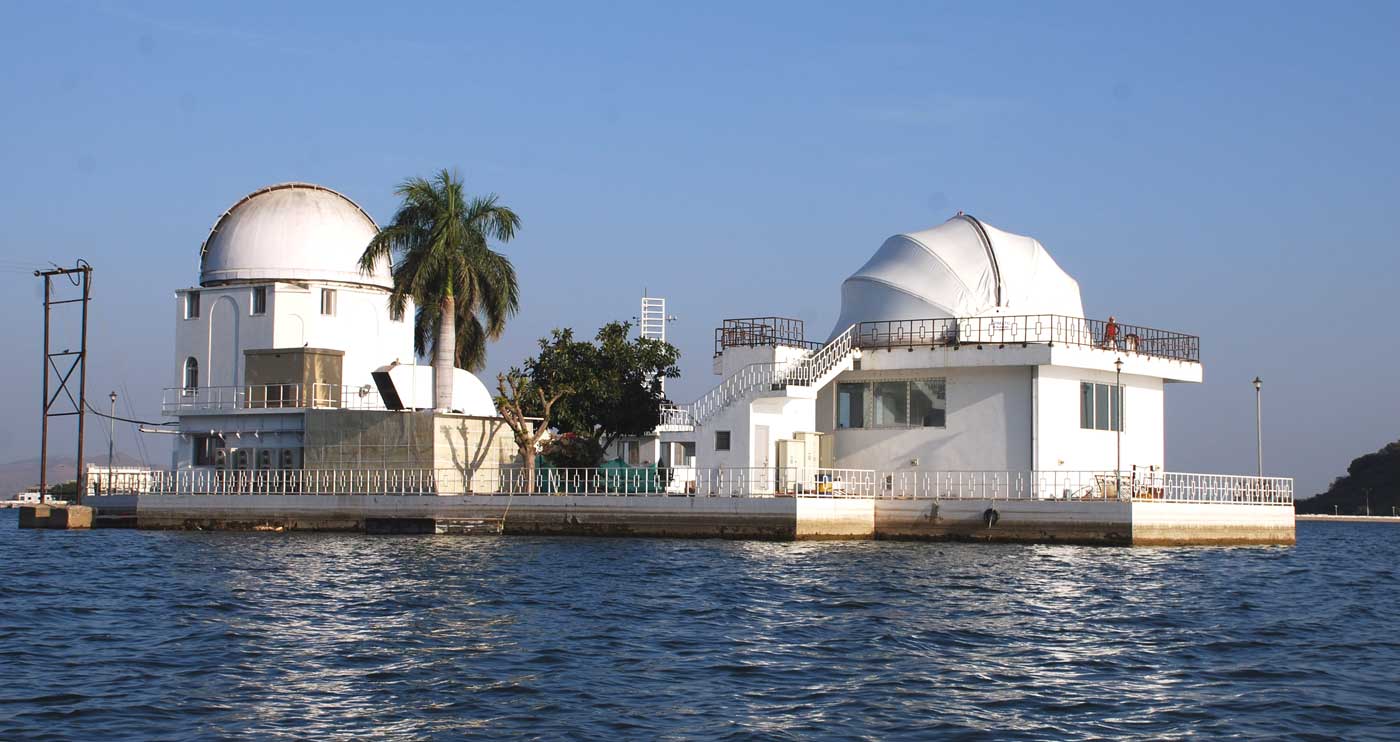Udaipur Gets India's Largest Telescope - MAST
Say hello to MAST - Multi-Application Solar Telescope, India's new biggest telescope located at the Udaipur Solar Observatory (USO). The MAST was inaugurated yesterday by Prof. U.R. Rao, Chairman of the governing council at the Physical Research Laboratory at Ahmedabad. The MAST telescope is located on an island in the Fateh Sagar lake with the control office located nearby. The official website of the observatory notes that the sky over Udaipur is very favorable for space observations and the surrounding lake reduces the temperature on the surface. This allows for lesser turbulence in the air mass which in-turn helps in improving the image quality and observation.
Prof. Rao spoke at the inaugural event informing the audience that the new telescope will allow the researchers to study the movement of stars even during day time. It will also help keep track of the movement of the Sun. Prof. Rao expressed hope that Indian researchers will be able to advance the knowledge we have about our skies.

Image Captured By MAST
The MAST will be governed by the Ministry of Science and Technology along with the Physical Research Lab at Ahmedabad. Build with a funding of about Rs. 26 Cr from the department of science, the MAST has been equipped with latest technology to capture 3D images of important solar events viz. the solar blast and solar flares.
MAST was designed back in 2004 as an off-axis Gregorian-Coude telescope having 50 cm aperture. A special dome made up of tensile fabric was recently commissioned to cover the telescope. The backend instruments of MAST include adaptive optics system, narrow band imaging polarimeter and LCVR polarimetric module. ISRO too has provided a spectropolarimeter, which will be deployed soon.

Researchers hope to study the seismic effects of solar flares and measure the vector magnetic fields at various heights in the Sun's atmosphere. Though currently India's biggest, the MAST is quite smaller in comparison to the China's FAST Telescope Will Listen To Sounds From The Universe, being built by World's Largest Radio Telescope Getting Ready In China By 2016.
Source: #-Link-Snipped-#
Prof. Rao spoke at the inaugural event informing the audience that the new telescope will allow the researchers to study the movement of stars even during day time. It will also help keep track of the movement of the Sun. Prof. Rao expressed hope that Indian researchers will be able to advance the knowledge we have about our skies.

Image Captured By MAST
The MAST will be governed by the Ministry of Science and Technology along with the Physical Research Lab at Ahmedabad. Build with a funding of about Rs. 26 Cr from the department of science, the MAST has been equipped with latest technology to capture 3D images of important solar events viz. the solar blast and solar flares.
MAST was designed back in 2004 as an off-axis Gregorian-Coude telescope having 50 cm aperture. A special dome made up of tensile fabric was recently commissioned to cover the telescope. The backend instruments of MAST include adaptive optics system, narrow band imaging polarimeter and LCVR polarimetric module. ISRO too has provided a spectropolarimeter, which will be deployed soon.

Researchers hope to study the seismic effects of solar flares and measure the vector magnetic fields at various heights in the Sun's atmosphere. Though currently India's biggest, the MAST is quite smaller in comparison to the China's FAST Telescope Will Listen To Sounds From The Universe, being built by World's Largest Radio Telescope Getting Ready In China By 2016.
Source: #-Link-Snipped-#
Replies
-
 Anoop KumarWondering Udaipur is so pollution free to get such setup.
Anoop KumarWondering Udaipur is so pollution free to get such setup.
Looking for "ISRO astronomy pic of the day" series😀 -
 Kaustubh Katdare
Kaustubh Katdare
If I'm not wrong, they get a lot of sunshine throughout the year compared to other locations. That should make the location ideal for sky observation.Anoop KumarWondering Udaipur is so pollution free to get such setup.
Looking for "ISRO astronomy pic of the day" series😀 -
 Anoop Kumar
Anoop KumarThe large water body surrounding the telescopes decreases the amount of heating of the surface layers. This decreases the turbulence in the air mass and thereby improves the image quality and seeing.
Yeah, missed the point this is specially for solar observation.
Most of observatories for night/general purpose should be at clean air location.
I have been at Royal Observatory, Greenwich. I learned that only major factor for setting up there, was pollution free air.
You are reading an archived discussion.
Related Posts
Every now and then, I get questions asked about blogging from people who are just getting started and who are totally new to it. I was thinking of starting a...
What would you call a laptop that is half an inch thinner and about a kg lighter than its competitors? Well, Panasonic calls it Toughbook 54 and today it has...
i friends i want some ideas about to my final year project
I've been reading about all wheel drives (AWDs) and came across various terms 4Matic, Quattro and xDrive. Quickly googled all the terms but couldn't really find satisfactory explanation of the...
Brought up in Chandigarh, Isha Singla comes from a services background and is a first generation entrepreneur. Her father is a Chief Engineer in Public Health department and mom is...
